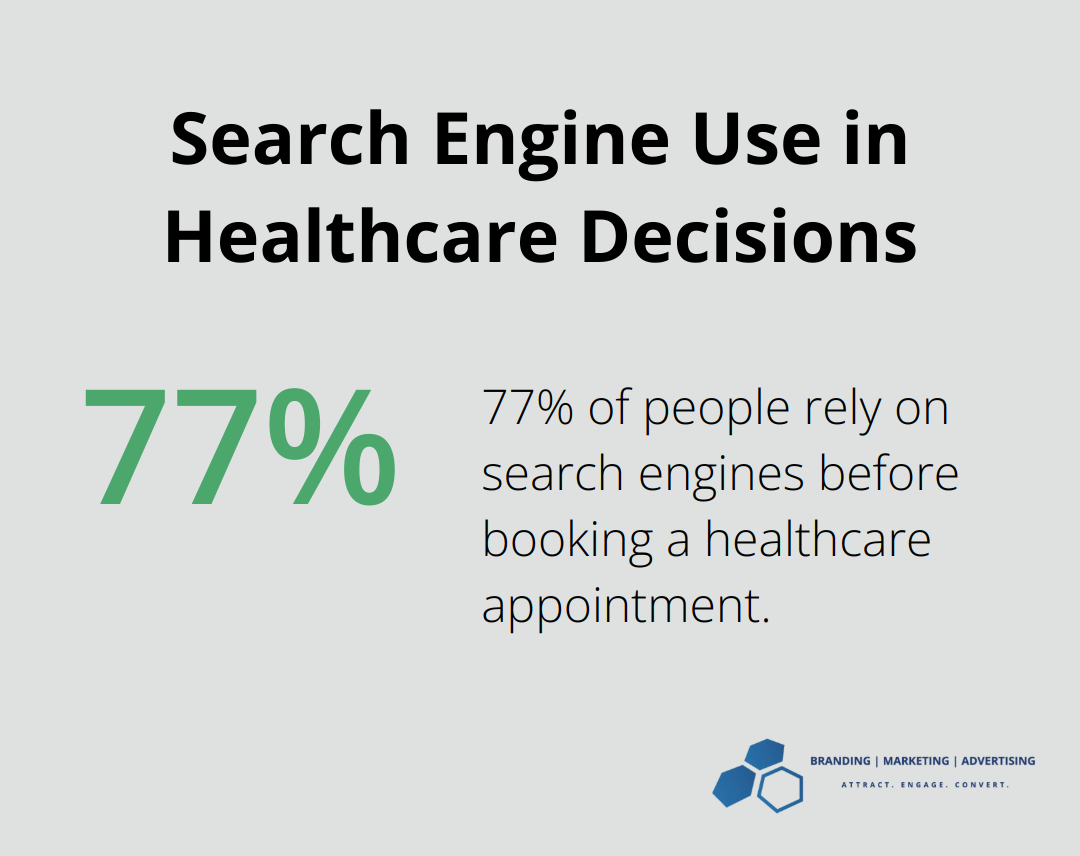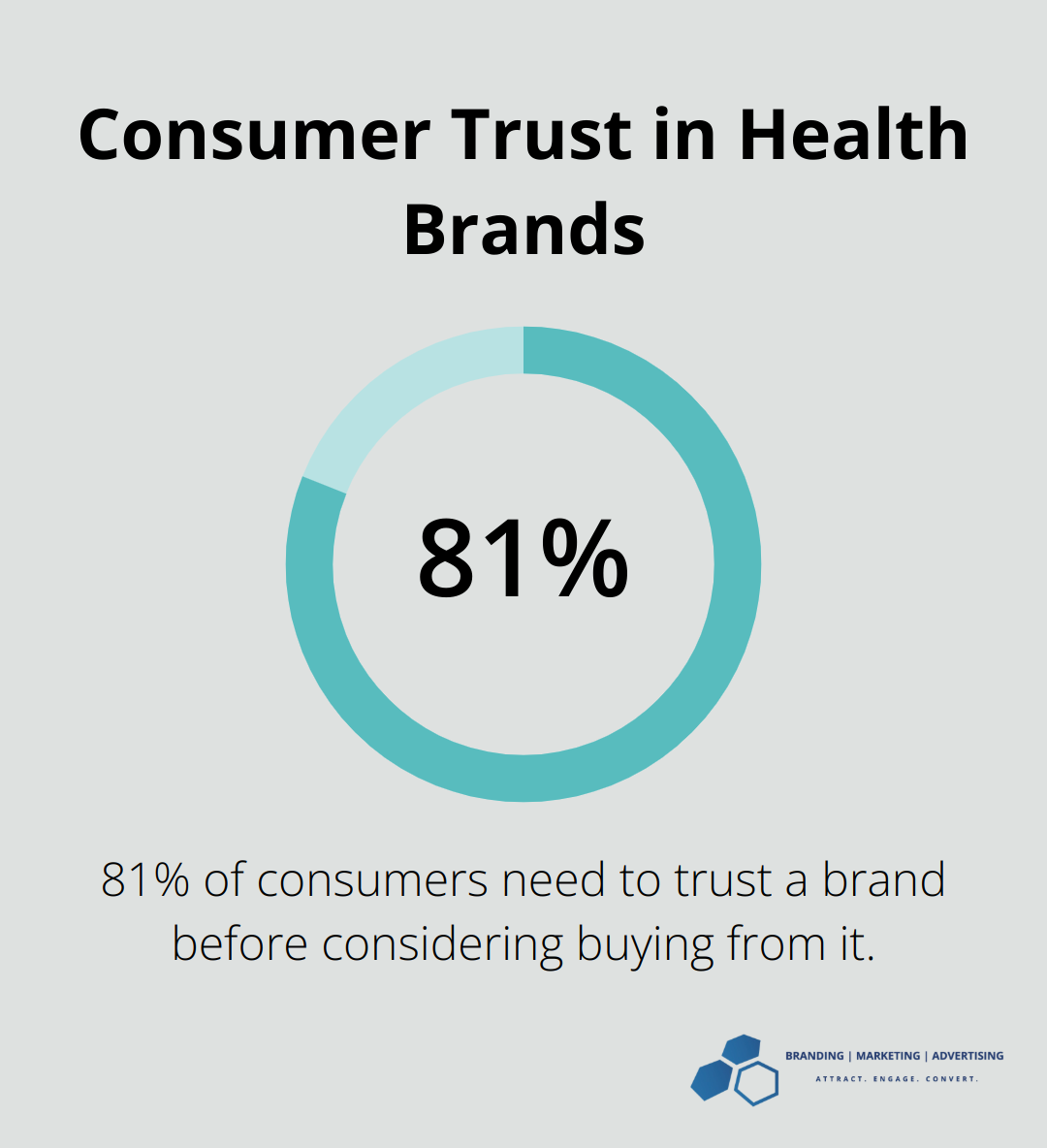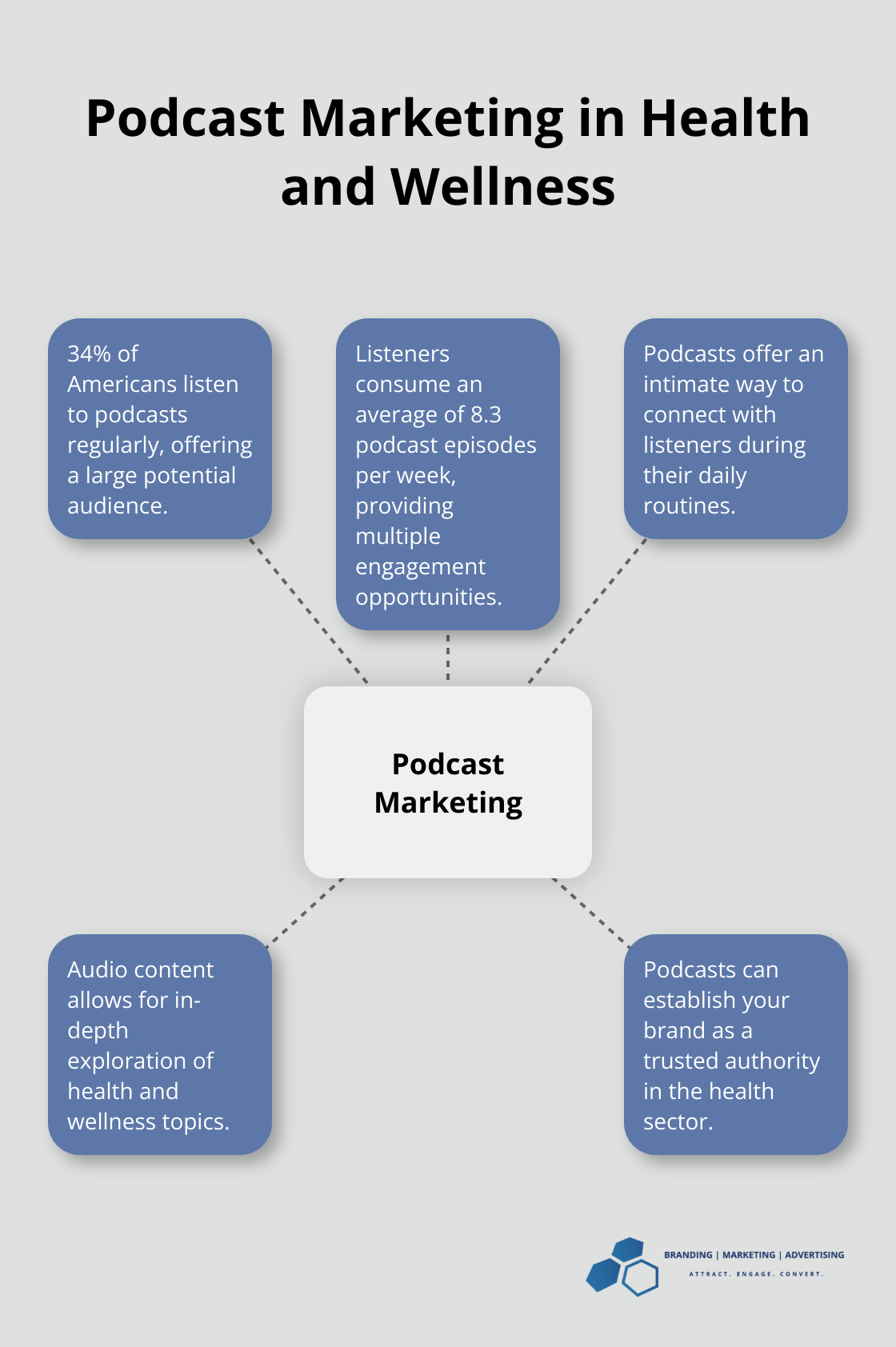How to Create Effective Health and Wellness Marketing Strategies
Health and wellness marketing strategies are evolving rapidly in today’s dynamic marketplace. At Branding | Marketing | Advertising, we’ve seen firsthand how businesses in this sector can thrive with the right approach.
This blog post will guide you through creating effective strategies to reach and engage your target audience. We’ll cover everything from understanding consumer behavior to implementing multi-channel tactics that drive results.
Who Are Your Health-Conscious Customers?
Pinpointing Your Ideal Customer
Creating detailed buyer personas forms the foundation of effective health and wellness marketing. These semi-fictional representations of your ideal customers stem from market research and real data about your existing clientele. Include demographics like age, gender, income, and location, but don’t stop there. Explore their psychographics – values, goals, challenges, and lifestyle choices.
A yoga studio might target busy professionals in their 30s and 40s who value work-life balance and seek stress relief. An organic supplement company could focus on health-conscious millennials interested in natural remedies and sustainable living.
Staying Ahead of Wellness Trends
The health and wellness industry evolves rapidly, with new trends emerging constantly. Stay informed by:
- Following industry publications and thought leaders
- Attending health and wellness conferences and trade shows
- Monitoring social media hashtags and discussions
- Conducting regular surveys with your customer base
The Global Wellness Institute projects the global wellness economy to reach nearly $7 trillion by 2025. Identifying which segments of this growing market align with your offerings will target your marketing efforts effectively.
Decoding Consumer Behavior in Health
Understanding how consumers make health-related decisions is essential. The digital marketing landscape has transformed how people research and purchase health products and services.
77% of people rely on search engines before booking an appointment with a healthcare provider, highlighting the importance of a strong online presence and valuable, easily accessible information.

Moreover, the rise of wearable technology and health apps has created a data-driven consumer base. People know more about their health metrics than ever before and expect personalized solutions.
Leveraging Data for Insights
Use analytics tools to gather data on your website visitors, social media followers, and email subscribers. This information can reveal patterns in consumer behavior, preferences, and pain points.
For example, a spike in traffic to blog posts about stress management techniques could indicate growing interest in mental health among your audience. You could then tailor your content marketing strategy to address this need more comprehensively.
Engaging with Your Community
Direct engagement provides invaluable insights. Host focus groups, conduct interviews, or create online communities where your customers can share their experiences and feedback. This qualitative data offers insights that numbers alone can’t capture.
The COVID-19 pandemic has significantly shifted health priorities for many consumers. A McKinsey survey found that 79% of respondents consider wellness important, and 42% view it as a top priority. This presents both challenges and opportunities for health and wellness marketers.
Segmenting Your Audience
Once you’ve gathered comprehensive data on your target audience, segment them into distinct groups based on shared characteristics or behaviors. This allows for more targeted and effective marketing campaigns.
A fitness app might segment its users into groups like “beginners looking to establish a routine,” “intermediate users focused on weight loss,” and “advanced athletes training for competitions.” Each group would receive tailored content, product recommendations, and email marketing messages.
With a clear understanding of your health-conscious customers, you can now move on to developing a strong brand message that resonates with their needs and values.
How to Craft a Compelling Brand Message
In the health and wellness industry, a strong brand message sets you apart in a crowded marketplace. Let’s explore how to create a brand message that resonates with your health-conscious audience.
Define Your Unique Value Proposition
Your unique value proposition (UVP) forms the cornerstone of your brand message. It distinguishes you from competitors and tells potential customers why they should choose you. To craft an effective UVP, answer these questions:
- What specific problem does your product or service solve?
- How does your solution differ from others in the market?
- What unique benefits do you offer your customers?
For example, a wellness app might focus on personalized nutrition plans based on DNA testing, offering a level of customization beyond standard diet apps. This unique approach becomes the core of their brand message.
Build Trust Through Authenticity
In the health and wellness sector, trust is paramount. Consumers increasingly scrutinize exaggerated claims and quick fixes. Your brand message should reflect genuine care for your customers’ wellbeing.
Transparency about your ingredients, processes, and results builds credibility. Share real customer testimonials and case studies. If you’re a nutritionist, showcase your qualifications and approach to holistic health.
A study found that 81% of consumers need to trust a brand to consider buying from it. This trust factor proves even more critical in health-related purchases.

Use Storytelling as the Heart of Your Brand
Storytelling serves as a powerful tool in health and wellness marketing. It humanizes your brand and creates emotional connections with your audience. Your brand story should encompass:
- Your company’s origin and mission
- The challenges you address in the health industry
- How your products or services improve people’s lives
For instance, a yoga studio might share the founder’s personal journey from stress-induced illness to wellness through yoga practice. This narrative not only explains the studio’s purpose but also resonates with potential clients facing similar challenges.
Align with Customer Values
Your brand message should reflect the values of your target audience. In the health and wellness sector, these often include:
- Sustainability and eco-friendliness
- Natural and organic ingredients
- Holistic approaches to health
- Community and social responsibility
A survey found that almost nine-in-ten (85%) consumers say they are experiencing the disruptive effects of climate change. If sustainability matters to your audience, make it a key part of your brand message.
Maintain Consistency Across All Channels
Once you’ve crafted your brand message, communicate it consistently across all marketing channels. This includes your website, social media, email marketing, and even in-person interactions.
Consistency builds recognition and reinforces your message. It also helps in creating a cohesive brand experience, which proves essential in building long-term customer relationships.
Test and Refine Your Message
Your brand message isn’t set in stone. It should evolve with your business and your audience’s needs. Regularly gather feedback from customers and analyze the performance of your marketing efforts.
A/B testing different versions of your message can provide valuable insights. For instance, you might test two different email subject lines to see which resonates more with your audience.
A strong brand message captures attention and builds lasting connections with your health-conscious customers. In the world of health and wellness, authenticity and value win hearts and minds. Now, let’s explore how to implement multi-channel marketing tactics to amplify your brand message and reach your target audience effectively.
How to Amplify Your Health Brand’s Reach
In today’s digital landscape, a multi-channel approach is essential for health and wellness brands to connect with their audience effectively. We at Branding | Marketing | Advertising have seen how integrating various marketing tactics can significantly boost brand visibility and engagement.
Harness the Power of Social Media
Social media platforms offer unparalleled opportunities to engage with health-conscious consumers. Instagram, for instance, is a visual powerhouse for wellness brands. According to Hootsuite, 90% of Instagram users follow at least one business account. This platform is ideal for sharing before-and-after transformations, healthy recipe ideas, or quick workout tips.
Facebook groups can foster community around your brand. Create a space where members can share their health journeys, ask questions, and support each other. This not only builds brand loyalty but also provides valuable insights into your audience’s needs and preferences.
TikTok has emerged as a game-changer for health and wellness content. Its short-form video format is perfect for quick health tips, workout demonstrations, or nutrition facts. The platform’s algorithm favors engaging content, allowing even smaller brands to gain significant traction.
Use Content Marketing as Your Secret Weapon
Content marketing goes beyond mere promotion; it provides value to your audience. A well-executed content strategy positions your brand as a trusted authority in the health and wellness space.
Blog posts are a cornerstone of content marketing. They allow you to explore topics relevant to your audience in depth. For example, a natural skincare brand might publish articles on the benefits of specific ingredients or tips for maintaining healthy skin. Regular blog updates also boost your SEO efforts, increasing your visibility in search results.
Video content is increasingly popular in the health sector. YouTube (the second largest search engine after Google) is an excellent platform for longer-form content. Tutorial videos, expert interviews, or in-depth explanations of health concepts can attract and retain viewers.
Podcasts offer another avenue to reach your audience. With 34% of Americans listening to an average of 8.3 podcast episodes per week, this medium provides an intimate way to connect with listeners during their daily routines.

Maximize Email Marketing for Health Brands
Email marketing remains one of the most effective channels for nurturing leads and maintaining customer relationships. Segmentation is key to successful email campaigns in the health and wellness sector.
Divide your email list based on factors like fitness level, health goals, or purchase history. This allows you to send highly targeted content that resonates with each group. For instance, a fitness app might send different workout suggestions to beginners versus advanced users.
Personalization goes beyond using a subscriber’s name. Use behavioral data to tailor your emails. If a customer frequently views yoga content on your website, send them emails about new yoga classes or products.
Leverage Influencer Partnerships
Influencer marketing can significantly amplify your brand’s reach. In the health and wellness space, micro-influencers (those with 10,000 to 100,000 followers) often have highly engaged audiences and can be more cost-effective than celebrity endorsements.
When selecting influencers, look beyond follower count. Engagement rate, audience demographics, and alignment with your brand values are important factors. A fitness influencer partnering with a protein shake brand, for example, should have an audience genuinely interested in nutrition and exercise.
Optimize Local SEO to Connect with Nearby Consumers
For health and wellness businesses with physical locations, local SEO is important. Google reports that 46% of all searches have local intent. Optimize your Google Business Profile. Ensure your business information is accurate and up-to-date across all online directories.
Encourage satisfied customers to leave reviews on Google and other platforms. Positive reviews not only boost your local search rankings but also build trust with potential customers.
Create location-specific content on your website. Blog posts about local health events, or pages dedicated to each of your locations, can improve your visibility in local search results.
Effective health and wellness marketing strategies require a multi-faceted approach. By implementing these tactics, you can create a robust online presence that attracts and engages your target audience. Consistency across all channels is key to building a strong, recognizable brand in the competitive health and wellness market. Storytelling can be a powerful tool to connect with your audience on an emotional level. Finally, don’t forget to regularly review and adjust your marketing efforts based on performance data and changing market trends.
Final Thoughts
Health and wellness marketing strategies require a multifaceted approach in this competitive industry. Understanding your target audience, crafting a compelling brand message, and implementing diverse marketing tactics will position your brand for success. The health and wellness sector constantly evolves, demanding continuous adaptation and a willingness to embrace new technologies and marketing channels.
Authenticity and trust form the foundation of effective health and wellness marketing. Your audience seeks genuine solutions to their health concerns, and your marketing should reflect a sincere commitment to their well-being. Data-driven decision-making should underpin your marketing efforts, leveraging analytics tools to gain insights into consumer behavior, campaign performance, and market trends.
As you implement your health and wellness marketing strategies, consider partnering with experts who can elevate your brand’s presence. At Branding | Marketing | Advertising, we specialize in creating tailored digital marketing solutions that drive real results for businesses in the health and wellness sector. Our comprehensive approach encompasses SEO, content creation, social media management, and online advertising (to name a few).












